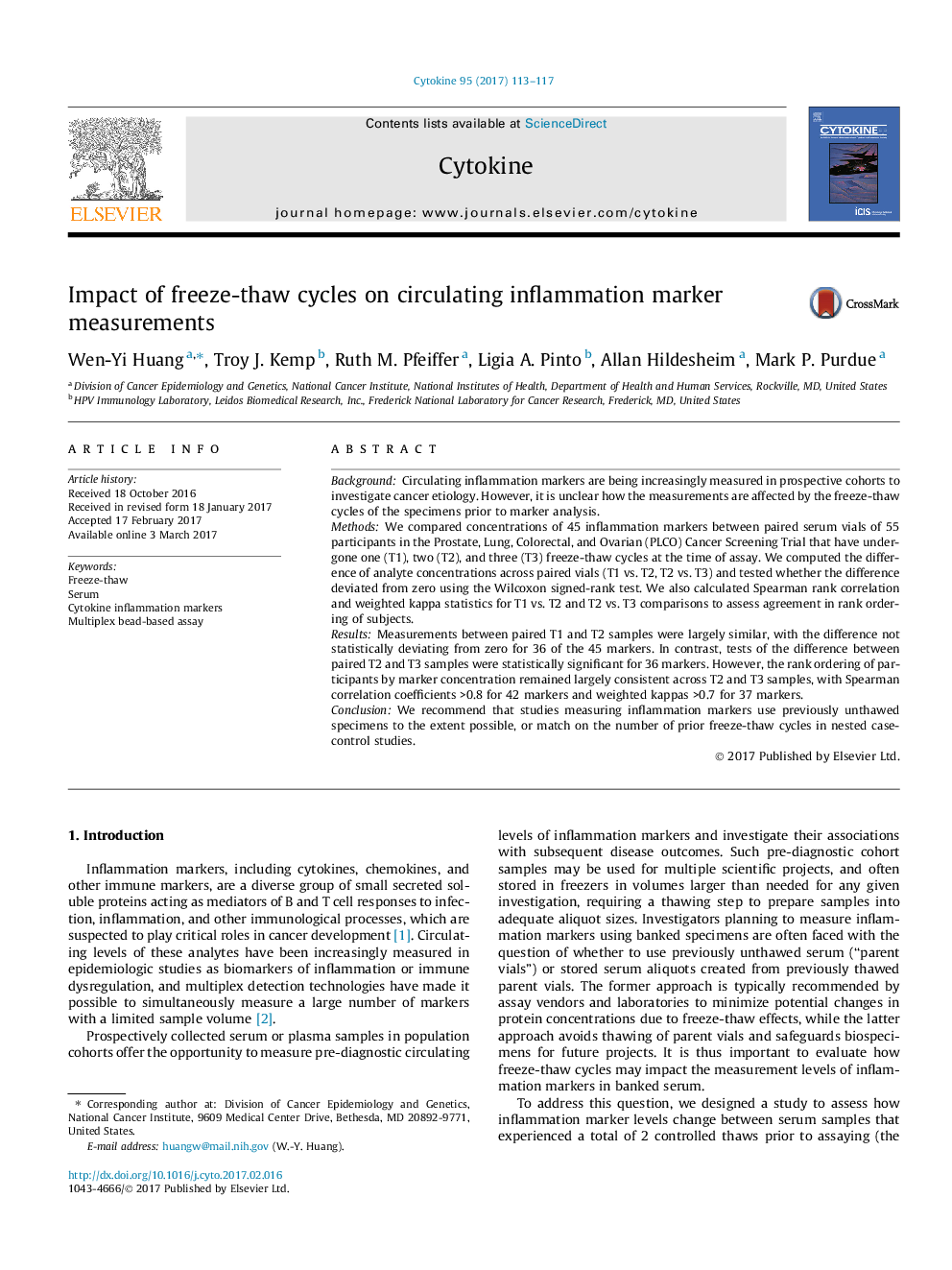| Article ID | Journal | Published Year | Pages | File Type |
|---|---|---|---|---|
| 5586967 | Cytokine | 2017 | 5 Pages |
â¢Immune marker concentrations in paired sera undergoing 1 and 2 prior thaws were largely similar.â¢Most analyte concentrations were higher in thrice-thawed vs. twice-thawed sera.â¢However, the rank order of concentrations was generally preserved across freeze-thaw cycles.â¢We recommend using unthawed serum or matching on number of prior thaws in case-control studies.
BackgroundCirculating inflammation markers are being increasingly measured in prospective cohorts to investigate cancer etiology. However, it is unclear how the measurements are affected by the freeze-thaw cycles of the specimens prior to marker analysis.MethodsWe compared concentrations of 45 inflammation markers between paired serum vials of 55 participants in the Prostate, Lung, Colorectal, and Ovarian (PLCO) Cancer Screening Trial that have undergone one (T1), two (T2), and three (T3) freeze-thaw cycles at the time of assay. We computed the difference of analyte concentrations across paired vials (T1 vs. T2, T2 vs. T3) and tested whether the difference deviated from zero using the Wilcoxon signed-rank test. We also calculated Spearman rank correlation and weighted kappa statistics for T1 vs. T2 and T2 vs. T3 comparisons to assess agreement in rank ordering of subjects.ResultsMeasurements between paired T1 and T2 samples were largely similar, with the difference not statistically deviating from zero for 36 of the 45 markers. In contrast, tests of the difference between paired T2 and T3 samples were statistically significant for 36 markers. However, the rank ordering of participants by marker concentration remained largely consistent across T2 and T3 samples, with Spearman correlation coefficients >0.8 for 42 markers and weighted kappas >0.7 for 37 markers.ConclusionWe recommend that studies measuring inflammation markers use previously unthawed specimens to the extent possible, or match on the number of prior freeze-thaw cycles in nested case-control studies.
